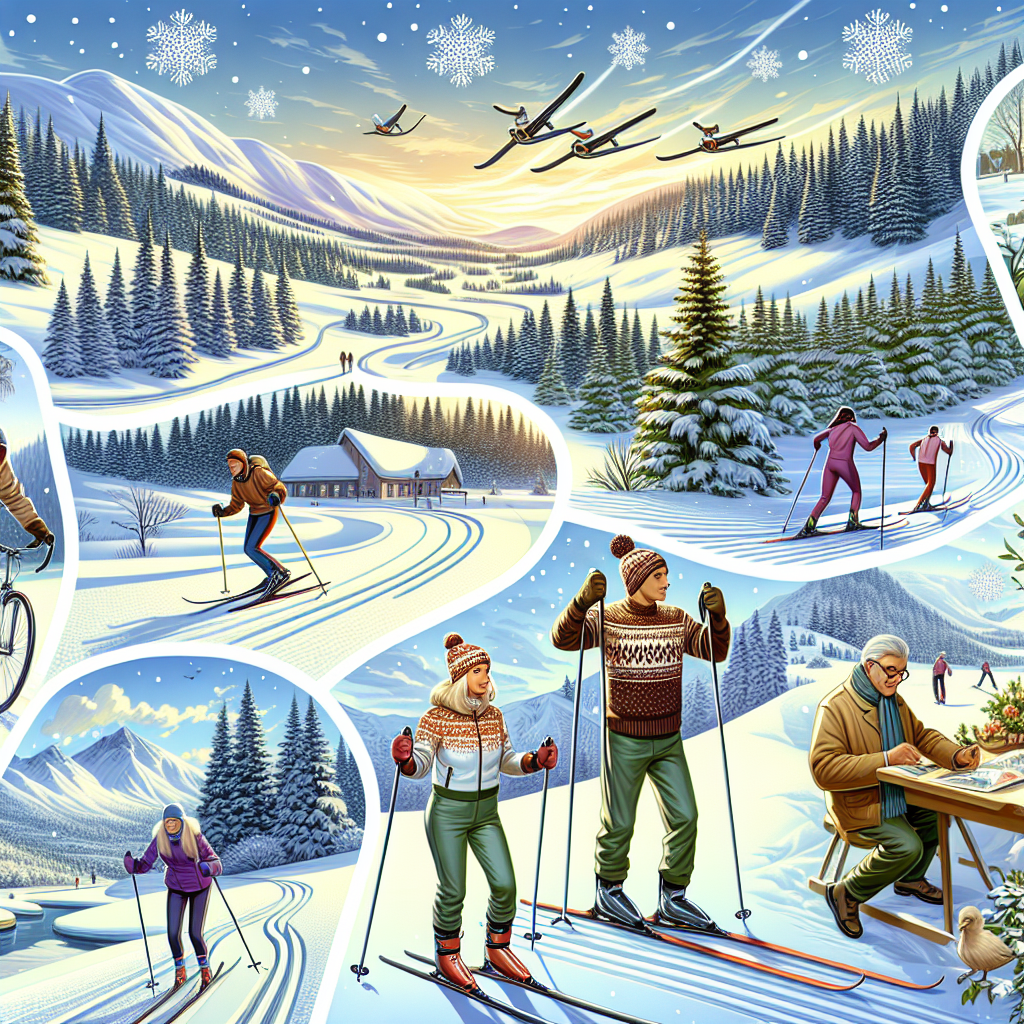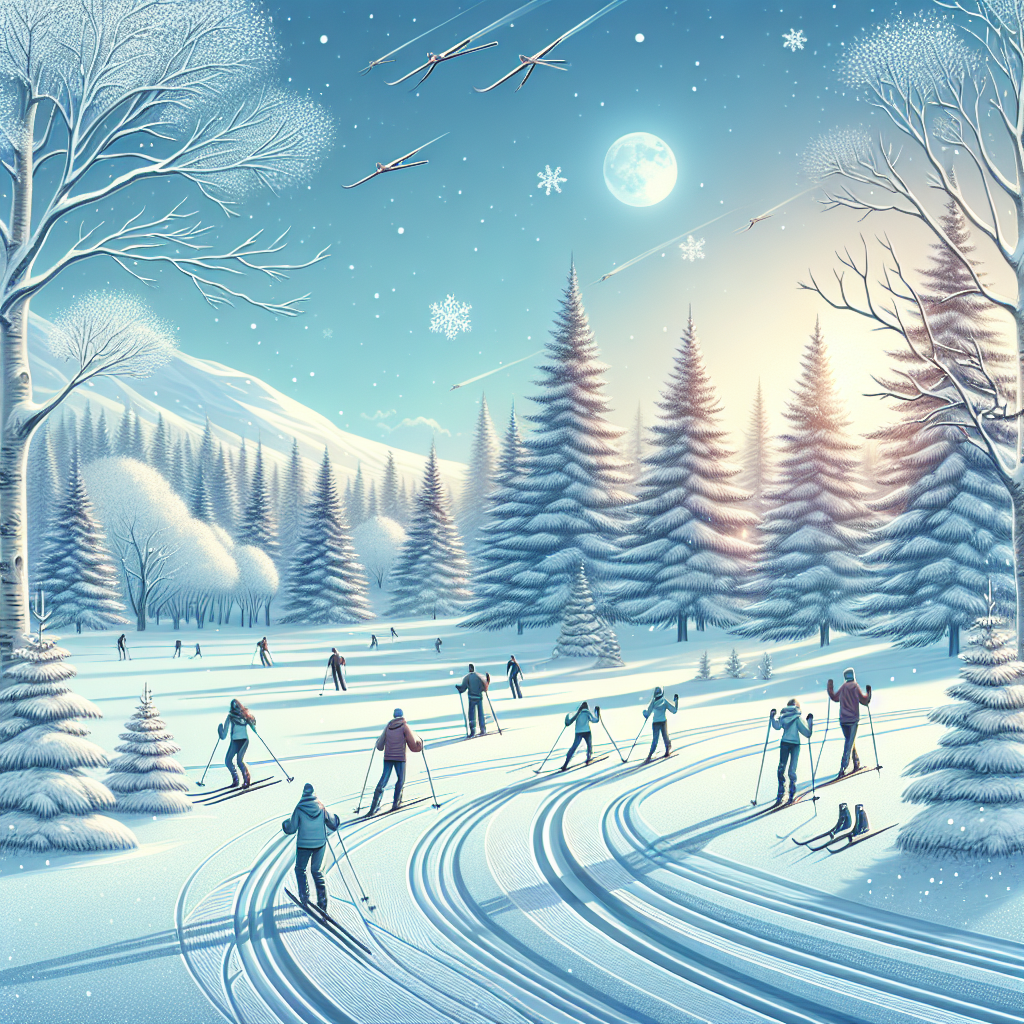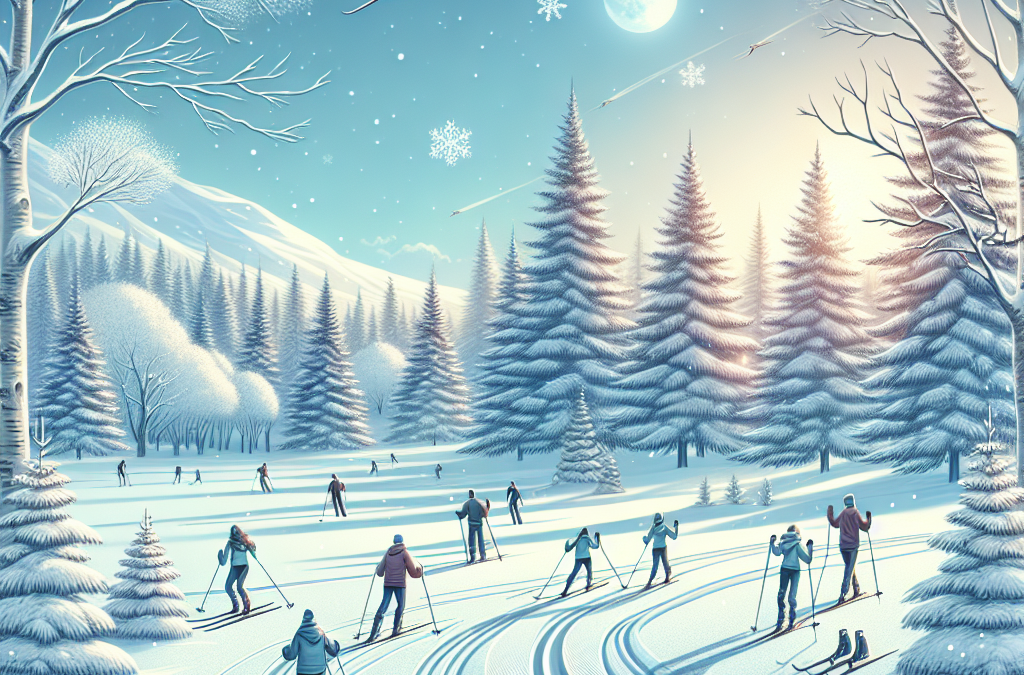Are you ready to embrace the thrill of gliding across the snow? “A Guide To Cross-Country Skiing For All Ages” exists to fuel your snowy adventures, whether you’re a giddy beginner or seasoned skiing master. This comprehensive guide explores everything from easy steps for getting started, mastering techniques, to finding the perfect gear tailored for all ages. So, brace yourself and prepare for an exciting journey into the world of cross-country skiing.

Understanding Cross-Country Skiing
Cross-country skiing is an excellent winter recreation for those of you who love to get out in the snow and experience nature. It’s also a brilliant way to bring in a full-body workout.
Definition and Origins of Cross-Country Skiing
Cross-country skiing is a form of skiing where participants propel themselves across snow-covered terrain using skis and poles, without the assistance of ski lifts or any other infrastructure. As an ancient method of transportation dating back to 6000 B.C., it originated in the Scandinavian region and remains a deeply embedded part of their culture.
Distinguishing Cross-Country Skiing from Other Skiing Types
Cross-country skiing stands out from other types of skiing primarily due to how it does not rely on gravity for movement. Unlike Alpine skiing, you propel yourself on flat or uphill terrains and not only downhill. It utilizes narrower and lighter skis and thigh-high ski poles. Also, only the toe of your boot is attached to the ski, so your heel can lift off the ski, giving you a motion closer to regular walking or running.
The Relevance of Cross-Country Skiing Today
Modern-day relevance of cross-country skiing is multifold- it’s a sport, a means of recreation, an exercise, and even a mode of transportation in snow-covered landscapes. It’s recognized as a Winter Olympic sport, and also popularly participated in at a recreational level by all age groups across the globe.
Basics of Cross-Country Skiing
Just like any other sport, to start with cross-country skiing, you need to understand the basics, which encompass the equipment, techniques, and rules.
Getting Familiar with Cross-Country Skiing Gear
The basic equipment for cross-country skiing include skis, boots, poles, and appropriate winter clothing. Ski gear consists of lightweight skis with smooth, semi sticky bases; ski boots designed to provide ankle mobility; and poles that have a distinct grip and strap system. Comfortable clothing that is both waterproof and breathable is also crucial.
Understanding the Different Cross-Country Skiing Techniques
There are two main techniques in cross-country skiing lovingly dubbed the “classic” and the “skating”. The classic technique resembles a walking or running motion, while the skating technique is more akin to ice skating and is usually faster. A third, less commonly used technique is the Telemark technique, which is typically used for downhill skiing.
Knowing the Rules and Etiquettes of Cross-Country Skiing
Maintaining etiquette in cross-country skiing ensures an enjoyable experience for everyone. You should stay to the right when overtaken, never block the trail, yield to skiers coming downhill, and never litter. In terms of rules, the International Ski Federation has a comprehensive set of regulations for competitive cross-country skiing.
Choosing the Right Equipment
The equipment you’d need not only has to fit your physical features but also be in tune with your skill level and specific requirements.
Differentiating Ski Types
Cross-country skis come in different types mainly suitable for classic skiing or skate skiing. Classic skis have a grip zone to facilitate the kick motion, while skate skis have no grip, and are shorter and wider.
Selecting the Right Ski Length
Your ski length can significantly affect your skiing performance and comfort. For classic skis, a rule of thumb is to select a length that reaches to around your wrist when you stand up straight with the ski touching the ground. On the other hand, for skate skis, they should reach somewhere between your chin and your nose.
Choosing Appropriate Poles and Boots
The right ski poles will reach to around your armpit, although the exact length can vary depending on the technique you’re using. Boots should fit comfortably, with enough room to wiggle your toes even with thick socks on.
Safety Measures in Cross-Country Skiing
Like any adventure sport, cross-country skiing also comes with its risks. Precautionary measures and safety rules can mitigate these risks.
Importance of Wearing Protective Gear
Helmets, goggles, knee and elbow pads may not be ‘compulsory’ but are a good idea for safety, especially for beginners and children. Helmets can prevent head injuries, goggles protect your eyes from icy snow particles, and pads cushion the impact during falls.
Checking Weather and Trail Conditions
You need to vigilantly check weather conditions and trail reports before heading out. Being caught in a snowstorm or getting lost on an unfamiliar trail could lead to hazardous situations.
Learning Basic First Aid and Rescue Techniques
Being aware of basic first aid and rescue techniques, like treating frostbite, snow-blindness, or fractures can be invaluable, especially if you’re skiing in remote areas.

Starting with Cross-Country Skiing
As you’re starting your cross-country skiing journey, it’s most important to start slow and gradually build your skills and strength.
Identifying Suitable Practice Areas
Ideal beginners’ areas have mild slopes, well-groomed trails, and experienced instructors at hand. You can select a cross-country ski area near you or opt for resorts that offer dedicated trails.
Beginning Your First Slide and Glide
To start with, familiarize yourself with the motion of sliding on skis. Create a small glide or stride and slowly increase the distance as you get the feeling. Also, spend some time understanding how to break and fall safely.
Building Stamina and Endurance
Cross-country skiing demands a good deal of stamina and endurance. Gradually increase the distance and speed of your skiing trips, making sure to take sufficient rest between sessions.
Cross-Country Skiing for Seniors
Cross-country skiing can be a fantastic winter activity for seniors offering not only exercise but also opportunities to enjoy the outdoors.
Benefits of Cross-Country Skiing for Seniors
This low-impact exercise helps in enhancing cardiovascular fitness, improving strength and balance, and boosting mental wellbeing. The fresh air and the natural beauty of snow-covered landscapes also offer a sense of tranquillity and peace.
Precautions for Senior Skiers
Special care should be taken to stay warm, avoid overexertion and keep properly hydrated. Also, choosing well-groomed trails and wearing protective gear can go a long way in ensuring a safe skiing experience.
Success Stories of Senior Cross-Country Skiers
Many seniors continue to have a lifelong association with cross-country skiing, even participating in senior races and competitions. Their stories can serve as an inspiration to learn that it’s never too late to start skiing!
Cross-Country Skiing for Kids
Cross-country skiing can be a fun and healthy outdoor activity for kids, too, inculcating in them an early love for winter sports and nature.
Introducing Kids to Cross-Country Skiing
Kids can be introduced to cross-country skiing at a young age, starting with simple glides on flat terrains and gradually introducing them to tracks and trails as they develop their skills.
Making Cross-Country Skiing Fun for Kids
Making skiing fun and enjoyable is key to keeping kids engaged. Incorporate games, group activities, races, and rewards into their skiing sessions and always maintain a positive and encouraging environment.
Youth Cross-Country Skiing Competitions
Youth skiing competitions can be a great way to instill a healthy competitive spirit into kids. International youth competitions also offer opportunities for young skiing talent to come into the limelight.
Advanced Cross-Country Skiing Techniques
As you develop in your skiing journey, mastering advanced techniques can help you ski more efficiently and compete at higher levels.
Mastering The Diagonal Stride
The diagonal stride is the classic cross-country skiing technique. It involves a leg kick and a synchronous pole push, resembling running or walking, but with a glide phase in each stride.
The Double Pole Technique
This technique only uses the arm power to push off with both poles and then glide. It requires good upper body strength and balance and is usually used for flat or slightly downhill terrain.
The Skate Skiing Move
Skate skiing resembles ice-skating, where skiers push off each ski in a V-pattern. It’s typically faster and used on firmer snow or in races.
Cross-Country Skiing Fitness and Conditioning
Skiing is a physically demanding sport, and therefore, maintaining a good fitness level and having a healthy diet is crucial.
The Role of Physical Fitness in Skiing
Physical fitness directly impacts your skiing performance. It improves strength, endurance, balance and reduces the risk of injuries. Regular cardio workouts, strength and balance exercises, and flexibility routines can all contribute to enhancing your skiing abilities.
Recommended Workouts and Exercises
Some of the ideal workouts for cross-country skiing include lunges, squats, core stability exercises, upper body strength training, and cardiovascular exercises like running, cycling, or swimming.
Diet and Nutrition for Cross-Country Skiers
Having a balanced diet rich in carbohydrates, protein and good fats is important. Pre-ski meals should focus on providing immediate energy, while post-ski meals should concentrate on replacing lost energy and aiding muscle recovery.
Competitive Cross-Country Skiing
Cross-country skiing is also a competitive sport with numerous races and competitions taking place regularly worldwide.
Understanding Ski Races and Tournaments
Races vary in distance, terrain, and skiing technique requirements. They range from sprint races to marathons, and the participants can be amateur skiers or professional athletes.
Training for Cross-Country Skiing Competitions
Training for competitions not only involves improving skiing skill and physical fitness, but also mastering racing strategies, understanding snow conditions, and improving mental toughness.
Profiles of Notable Cross-Country Skiing Athletes
The world of cross-country skiing has seen numerous illustrious athletes, from Bjørn Dæhlie and Marit Bjørgen of Norway to Bill Koch of USA, who have left an indelible mark on the sport with their exceptional performance and love for skiing. Their stories can serve as a source of motivation for anyone considering taking up the sport.
And so, your journey towards cross-country skiing begins. It’s a sport that’s as much about racing your heart out on the track as it is about enjoying the embrace of nature on a snowy trail. The joy of gliding on snow-covered tracks, basking in the tranquillity of the landscape, and pushing your physical and mental boundaries is something to look forward to. So, put on your skis and get ready to embrace the delightful world of cross-country skiing. Happy Skiing to you!

